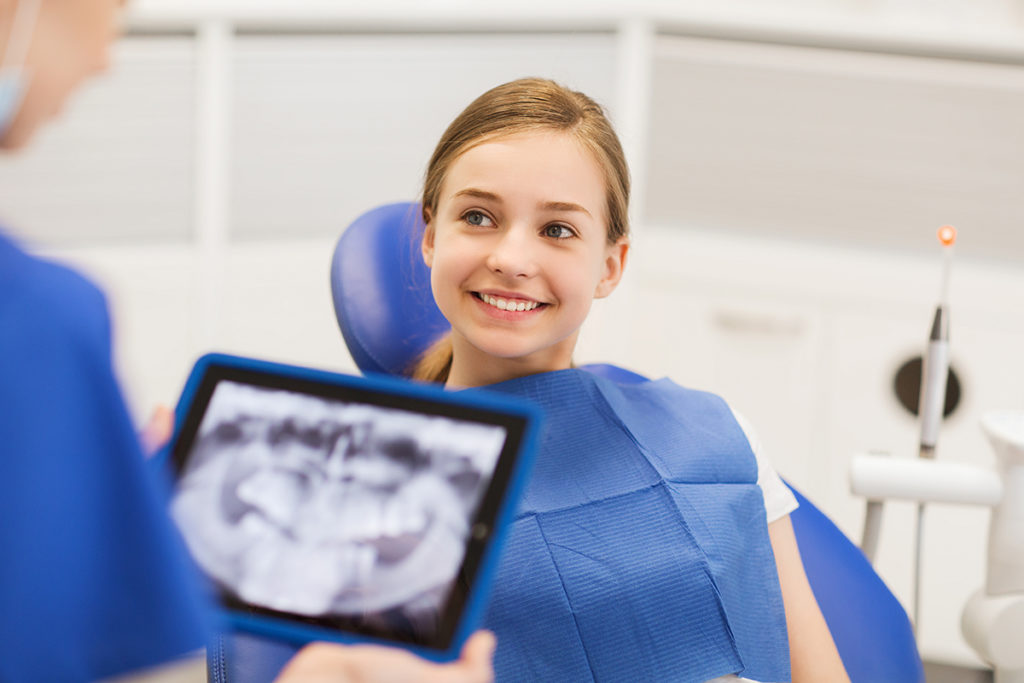Most of our patients know that a visit to our practice sometimes involves an X-ray or two. This procedure is because radiographs are important in helping us assess your needs and in determining an appropriate, customized treatment plan. But unfortunately, there are still some people who are skeptical about X-rays and have questions about their impact on health.
Well, we have some good news for those of you with concerns—X-rays pose very little danger to your health. This reality is because the amount of radiation you receive during routine X-rays here at our practice is MUCH smaller than the amount you receive daily from natural radiation sources.
Why? Well, here’s everything you need to know about X-rays and why getting one at our Philadelphia orthodontist clinic is as safe as anywhere else.
There’s More Radiation Around Than You Think
Exposure to tiny amounts of radiation is a natural component of life! Each year, the average United States citizen is exposed to about 360 mREM from everyday things like the earth itself, natural materials, cosmic radiation, and even from other people! In fact, the State Department of Health has set the yearly maximum safe radiation level at 5000 mREM.
Our orthodontic X-rays emit less than .50 mREM per unit—which means that you’re likely exposed to about twenty times that much each year just from cooking dinner!
Dental X-rays Vs. Traditional Film X-rays
Dental X-rays are a great tool to use when we’re working with you to identify and treat your dental problems. But how do they work and what are the benefits of using them?
The biggest difference between dental X-rays and traditional film X-rays is that the former is digital. This means that instead of taking images on a film and sending them to the lab to develop, you can immediately view your X-rays right after they are taken. The benefits of this are obvious: you don’t have to wait for days or weeks to see your X-rays, and they can be sent to other dentists in an instant.
With digital X-rays, there’s no need for the patient to sit still for long periods of time while their mouth is open wide – which can be uncomfortable for some people. Instead, we use state-of-the-art equipment that does not require such extreme positions. It’s also important for us as dentists because it allows us to focus on our work without worrying about whether or not we captured every angle of your teeth on film.
Another benefit of digital X-ray machines is that they take less time than traditional film systems – which means less exposure time for patients! Patients who are claustrophobic or anxious may feel more comfortable during their dental visit if they know we are using a modern system that takes less time and doesn’t require them
Both types of X-rays have potential risks associated with them, but digital X-rays have been shown to have fewer side effects than traditional films because there is less radiation exposure during each session.
Dental X-Rays Procedures Are Highly Regulated
State licensing boards and federal agencies tightly control dental X-rays. The U.S. Food and Drug Administration (FDA) regulates all medical devices used by dentists and other health care providers in the United States. Dental X-rays are one such device.
The FDA has established strict guidelines for their use and manufacture, including the amount of radiation emitted during an exam. The exposure levels are set well below those considered dangerous or harmful by experts in the field of radiation safety.
At Orthodontics Limited, our specialist doctors take great care to ensure that your dental X-ray is performed safely. Our X-ray procedures are also regulated by both the state of Philadelphia and the American Dental Association (ADA).
The specific dental X-rays we take are carefully selected based on your age, treated condition, and other factors unique to you. Our office follows these important guidelines closely to ensure that all our patients receive the highest level of care possible.
The Specific Dental X-Rays We Take
Although older dental X-rays use large amounts of radiation, the modern digital dental X-ray technologies we use produce just a fraction of the radiation used in older film radiographs.
The specific dental X-rays we take depend on what type of exam you’re getting done and what kind of oral health concerns you may have. For example, if you have a cavity in one of your teeth, we may take an intraoral photograph or bitewing x-ray to evaluate the extent of damage and determine how best to get your tooth back in great shape.
Even though they help with your treatment, we do not use intraoral dental X-rays unless they are essential. Instead, we take an extraoral panoramic X-ray (which shows the entire jaw) to see how your teeth fit together. When we feel that you need one, we may also take a bitewing X-ray of your upper and lower teeth, which helps identify decay, infections, and fractures.
Should You Be Concerned About X-Ray Radiation Exposure?
Dental X-rays are an essential part of your orthodontic examination. These dental X-rays are taken to help us diagnose any issues that may be present in your teeth, gums, and jaw bones.
The good news is that the amount of radiation a single dental X-ray yields is very small. It’s less than one percent of the amount we’re exposed to daily from natural sources like the sun and even our bodies.
Our professional orthodontists in Northeastern Philadelphia take steps to limit your exposure even further. For example, our X-rays are taken using low-dose techniques that use less radiation than the traditional method.
When possible, we’ll take multiple images from different angles, so we only need to use one film instead of multiple ones. We also wear lead aprons and shields when taking X-rays so that we don’t receive any exposure ourselves.
Key Takeaway
X-rays are an essential part of orthodontic care, as we use them to diagnose problems that we might not otherwise be able to detect. We promise you’re in the best of hands here at our practice, so don’t let X-ray fears worry you. If you ever have any questions or concerns regarding radiographs, please don’t hesitate to contact us! We would love to help put your mind at ease.



